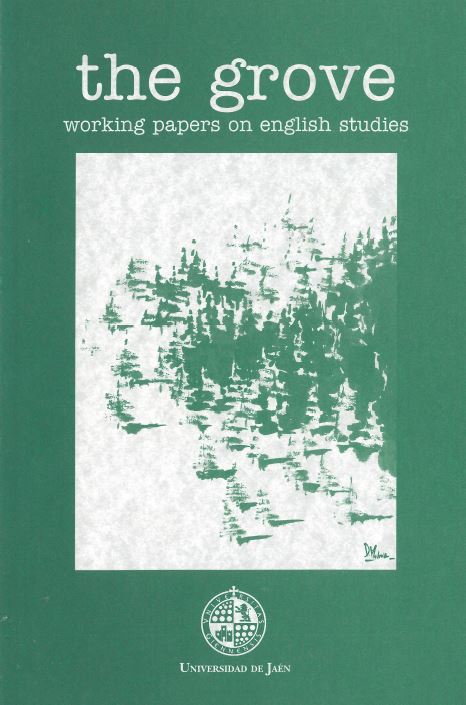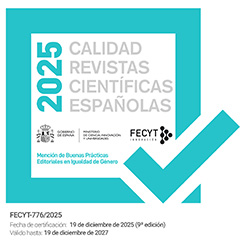Identities in Seamus Heaney’s Translation of Beowulf
Keywords:
Beowulf, linguistics, literature, Old English, poetry, translationAbstract
The present article sets out to prove the hypothesis that the Modern English translation of Beowulf by Seamus Heaney reflects his Irish political and cultural roots. His interpretation aroused the interest of critics by its use of Hiberno-English and dealing with linguistic structural tasks in a different way for the first time. By considering specific examples from the original and the translated version of the poem, the present article analyses the linguistic choices made by Heaney in his translation of the Old English version of Beowulf taking into account its critical reception and the author’s personal opinions and experiences. It sets out to establish the roots of this translation in Heaney’s upbringing in rural Ireland by observing specific memories from his own childhood, family members, politics and surroundings. The article also compares this translation to previous ones to provide the reasons for the uniqueness of Heaney’s rendering and establish its importance in today’s literary scene.
Downloads
References
Alexander, Michael. Beowulf. A verse translation. Penguin, 1973.
British Library. Anglo-Saxon Word Play (May 16, 2006). Web. 20 Oct. 2019 <https://www.bl.uk/learning/langlit/changlang/activities/lang/anglosaxon/anglosax.html>.
Barlow, Adrian. World and Time: Teaching Literature in Context. Cambridge: Cambridge University Press, 2009.
Brunetti, Giuseppe. Traduzioni del Beowulf in Inglese Moderno. Bergamo: Bergamo University Press, 2001.
Chickering, Howell. “Beowulf and ‘Heaneywulf’”. Kenyon Review, 24.1 (Winter 2002): 160-78.
Eagleton, Terry. “Hasped and Hooped and Hirpling: Heaney Conquers Beowulf”. London Review of Books (November 1999): 1-7.
Filppula, Markku. The Grammar of Irish English Language in Hibernian style. London, New York: Routledge, 1999. DOI: https://doi.org/10.2307/29742738
Heaney, Seamus. Beowulf. New York: Norton, 2000.
---. The Drag of the Golden Chain. Times Literary Supplement, November 12 (1999): 14-16.
---. Preoccupations: Selected Prose 1968-78. London, Boston: Faber & Faber, 1988.
---. “The Impact of Translation”. The Government of the Tongue, by Seamus Heaney. London: Faber & Faber, 1988. 36- 44.
Howe, Nicholas. “Scullionspeak”. The New Republic, February 28 (2000): 32-37.
Klaeber, Francis. Beowulf. Lexington, MA: Heath, 1950. DOI: https://doi.org/10.1515/bgsl.1950.1950.72.120
Liuzza, Roy M. “Beowulf in Translation: Problems and Possibilities”. Old English Newsletter: Subsidia 31 (2002): 23-40.
McCarthy, Conor. “Language and History in Seamus Heaney’s Beowulf”. Oxford Journals 50.197 (2001): 149-58. DOI: https://doi.org/10.1093/english/50.197.149.
McGowan, Joseph. “Heaney, Caedmon, Beowulf” Review of Beowulf, by Seamus Heaney. New Hibernia Review (Summer 2002): 25-42. DOI: https://doi.org/10.1353/nhr.2002.0035
Milfull, Inge B., and Hans Sauer. “Seamus Heaney: Ulster, Old English, and Beowulf. Bookmarks from the Past” Studies in Early English Language and Literature in Honour of Helmut Gneuss. Eds. Helmut Gneuss et al. Frankfurt Am Main: Peter Lang, 2003: 81-141.
O’Brien, Eugene. “Seamus Heaney and the Ethics of Translation”. Canadian Journal of Irish Studies 27/28 (2001): 20–37. Web. 21 Nov. 2019. www.jstor.org/stable/25515374. DOI: https://doi.org/10.2307/25515374
O’Brien, Katherine O’Keffe. “Beowulf: A New Verse Translation”. The Medieval Review. Indiana University Digital, 2013.
Poetry Foundation. Seamus Heaney. (n.d.). Web. 15 Jul. 2019. <https://www.poetryfoundation.org/poets/seamus-heaney>.
Ráez Padilla, Juan. “Seating at the Head of the Literary Table: Seamus Heaney’s Countercultural Redress in Beowulf: A New Translation (1999)”. New Trends in Translation and Cultural Identity. Eds. Micaela Muñoz-Calvo et al. Newcastle upon Tyne: Cambridge Scholars Publishing, 2008. 289-98.
Sauer, Hans. “Heaneywulf, Liuzzawulf: Two Recent Translations of Beowulf. Of Remembrance the Keye: Medieval Literature and its Impact through the Ages”. Festschrift for Karl Heinz Göller on the Occasion of his 80th birthday. Ed. Uwe Böker. Frankfurt-am-Main, 2004. 331-48.
---. “Kemble’s Beowulf and Heaney’s Beowulf”. The Kemble Lectures in Anglo-Saxon Studies, Volume 2. Ed. Alice Jorgensen et al. Dublin: School of English, Trinity College Dublin, 2018. 79-108.
Shippey, Thomas, and Andreas Haarder. The Critical Heritage Beowulf. London: Routledge, 1998.
Shippey, Thomas. “Beowulf for the Big-Voiced Scullions”. Times Literary Supplement 1 Oct (1999): 9-10. Web. 1 Aug. 2019. <http://drmarkwomack.com/engl-2322/handouts/shippey-review/ >.
Venuti, Lawrence. The Translator’s Invisibility. New York: Routledge, 1995.
Downloads
Published
Issue
Section
License
Authors who publish with this journal agree to retain copyright and grant the journal right of first publication with the work simultaneously licensed under a Creative Commons Attribution License that allows others to share the work with an acknowledgement of the work's authorship and initial publication in this journal. Also, authors will retain the rights on their work, even if they will be granting The Grove. Working Papers on English Studies a non-exclusive right of use to reproduce, edit, distribute, publicly communicate and show their work. Therefore, authors are free to engage in additional, independent contracts for non-exclusive distribution of the works published in this journal (such as uploading them to an institutional repository or publishing them in a book), as long as the fact that the manuscripts were first published in this journal is acknowledged.

























